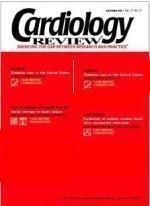Publication
Article
Cardiology Review® Online
ACP recommends statins for most patients with type 2 diabetes
All patients with type 2 diabetes and coronary artery disease (CAD) or at least one other risk factor for cardiovascular disease should be on lipid-lowering agents, according to a recent clinical practice guideline from the American College of Physicians (ACP).
This recommendation, which qualifies nearly all patients with type 2 diabetes for an HMG-CoA reductase inhibitor (statin), is based on a review and meta-analysis of 12 clinical studies that collected outcomes data on the use of lipid-lowering drugs in patients with type 2 diabetes. The guidelines were published in the Annals of Internal Medicine (2004;140[8]:644-649).
Patients with type 2 diabetes have markedly elevated risk for cardiovascular disease. Up to 80% of patients will develop or die of macrovascular complications, such as CAD, cerebrovascular disease, and peripheral vascular disease. The ACP called for tight control of blood pressure for patients with diabetes in April 2003. “When treating diabetes, controlling cardiovascular risk factors, particularly cholesterol levels and high blood pressure, is as important as controlling blood sugar,” said Vincenza Snow, MD, lead author of the guidelines issued by the Clinical Efficacy Assessment Subcommittee of the ACP.
The meta-analysis found that use of statins leads to a 22% to 24% reduction in major cardiovascular events in patients with diabetes. Relative risk reductions were similar for both primary and secondary prevention, but the absolute risk reduction was more than twice as high for those with known CAD. Hence, the guidelines did not recommend use of statins for patients with lower than average risk, such as young patients with diabetes and no cardiovascular risk factors.
For the primary prevention studies analyzed, the number needed to treat to prevent one cardiovascular event over an average of 4.3 years was 34.5. For secondary prevention, the number needed to treat for benefit was only 13.8 over an average of 4.9 years.
The subcommittee found that an appropriate target for low-density lipoprotein (LDL) cholesterol remains poorly defined. Notably, the Heart Protection Study showed a consistent 25% reduction in risk for cardiovascular events regardless
of LDL cholesterol levels at base-line, even for patients whose initial LDL cholesterol levels were close
to 100 mg/dL. In addition to LDL cholesterol lowering, the benefits
of statins may be due to non—lipid-related effects such as a reduction
of inflammation, stabilization of plaque, and improved endothelial function, they speculated. Hence, empiric use for those with risk factors is more important than achieving a specific LDL cholesterol level.
According to the subcommittee, statins are very safe, and routine monitoring of liver and muscle enzymes is not warranted unless patients have symptoms, liver enzyme abnormalities at baseline, or take drugs that interact with statins. They added that, besides those with low cardiovascular risk, an exception to the use of statins may be for diabetic patients with low levels
of high-density lipoprotein cholesterol and low LDL cholesterol levels, who may benefit more from treatment with gemfibrozil than with a statin drug.
In summary, the recommendations state that:
• All patients with type 2 diabetes and known CAD should be on lipid-lowering therapy regardless of their cholesterol level. “Statins have the most cumulative evidence of benefit and should be the agent of choice for secondary prevention,” according to the report’s authors.
• All adults with type 2 diabetes and another risk factor for CAD, such as high blood pressure, hypercholesterolemia, smoking, physical inactivity, or overweight or obesity, should be taking statins or gemfibrozil, regardless of cholesterol levels.
• Physicians should not delay in starting treatment until cholesterol reaches a certain level and should not treat to a target level of cholesterol.
• Once therapy is started, patients should remain on at least a moderate dosage of a statin drug.
• Routine monitoring of liver function and muscle enzymes is probably not needed unless patients have a liver abnormality, muscle pain, or are taking drugs that interact with statins.






